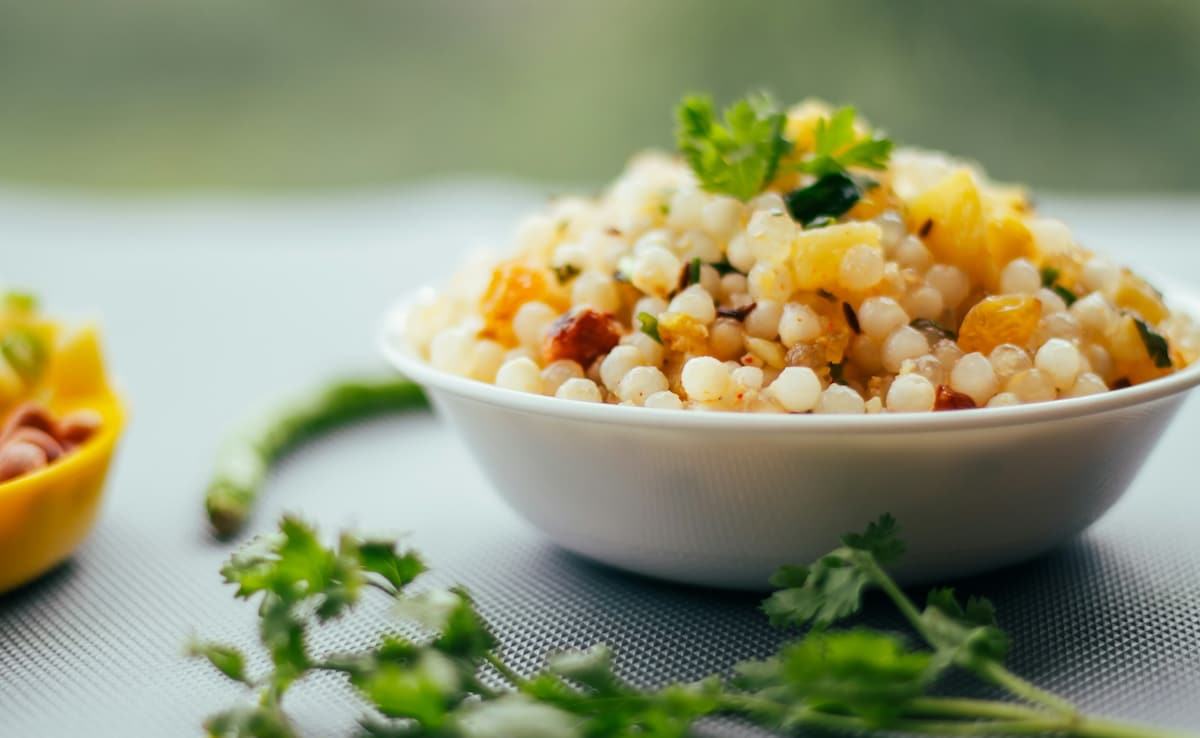
For many, Navratri fasting means skipping grains, avoiding onion and garlic, or cooking with buckwheat flour instead of wheat. But Ayurveda views fasting at this time very differently. "From an Ayurvedic perspective, the true purpose of fasting during Navratri is closely linked with seasonal transitions," says Dr Tanu Singh, an expert in women's health and Ayurvedic nutrition, and the co-founder of Lifeyoga. "Navratri usually falls at the junction of seasons, a time when the balance of the three doshas, Vata, Pitta and Kapha, begins to shift. During this period, digestive fire (Agni) naturally weakens, making the body more vulnerable to imbalances, toxins and illnesses. Fasting, therefore, acts as a way to give rest to the digestive system, promote internal cleansing (shuddhi) and restore equilibrium in the body."
Beyond physical effects, fasting also encourages self-discipline, self-reflection, and mindful living. Dr Singh adds: "Ayurveda teaches that fasting is not about mere deprivation of food but about resetting, recharging and repairing both body and mind. By simplifying diet and reducing indulgence, one creates space to cultivate positive intentions, clarity and inner strength for the months ahead."
So, how does fasting prepare us for seasonal change? And what foods and practices should you prioritise? Here's Dr Singh's Ayurvedic guidance on Ritucharya and Navratri fasting.
Navratri Fasting As A Seasonal Detox
According to Dr Singh, fasting during Navratri is Ayurveda's way of helping the body adapt to seasonal transitions.
"Ayurveda teaches that whenever there is a seasonal transition (Ritu Sandhi), the body and mind need time to adapt," she explains. "By lightening the diet and resting the digestive system, the body is cleansed of accumulated toxins from the previous season. This prepares the digestive fire (Agni) to strengthen again, enabling the body to receive nourishment more efficiently in the coming months. In this way, fasting works like a reset button, preparing the system for the challenges of the next six months."
She describes Navratri fasting as both physical and spiritual: "It is also an Antaryatra, an inner journey. This period encourages letting go of unhealthy habits, cultivating new positive routines and developing emotional balance."
Why Sattvic Foods Matter During Navratri
During Navratri, people are encouraged to eat light and sattvic foods. Dr Singh explains why. "Ayurveda teaches that food has three qualities, Sattvic (pure, light and calming), Rajasic (stimulating), and Tamasic (heavy, dulling)," she explains. "Navratri encourages us to shift toward a predominantly sattvic diet, which is easy to digest and helps the body enter recovery and repair mode. Heavy foods during this time strain the digestive fire (Agni), whereas light fasting gives space for healing and restoration."
Examples of sattvic foods include fresh fruits, nuts, light grains, simple vegetables, and herbal teas. "It is important to remember that fasting in Ayurveda does not mean starving or torturing the body. Rather, it is about mindful eating, consuming lighter meals or reducing one or two meals depending on individual capacity and lifestyle," Dr Singh clarifies.
Navratri: A Time To Reset Digestive Fire
Dr Singh points out that resetting Agni is critical before the onset of winter. "In Ayurveda, Jatharagni (digestive fire) is central to health because it governs how well food is digested and transformed into energy. When food is not digested properly, it leads to the formation of toxins (Ama), which become the root cause of most diseases," she explains.
"Fasting helps by giving rest to the digestive system, burning accumulated Ama, and resetting Agni to a balanced state," she adds further. "This becomes particularly important before the onset of winter. During winter, digestive fire naturally becomes stronger to handle heavier foods, but if it is clogged with toxins from the previous season, it can create imbalance and disease."

Photo Credit: Unsplash
Recommended Ayurvedic Foods During Navratri
To keep fasting nourishing yet light, Dr Singh suggests the following focus areas for your Navratri fasting diet:
- Coconut water and coconut curd for hydration and gut health.
- Root vegetables like sweet potato or boiled potato for gentle energy.
- Light grains and flours such as barnyard millet (samak ke chawal), buckwheat (kuttu atta), or water chestnut flour (singhara atta).
- Fresh fruits like pomegranate, apple, and papaya for antioxidants and Vitamin C.
- Light vegetables such as bottle gourd and pumpkin.
- Warm water and herbal teas with cumin, fennel, or ginger to aid detoxification.
She advises against "overly spicy, fried, or processed foods as they disturb digestion and increase toxins."
Special Guidance For People With Health Conditions
"Fasting should never harm the body; it must be gentle and customised," stresses Dr Singh. She highlights how people with comorbidities and existing health conditions should follow these recommendations during Navratri:
Diabetes:
"Do not skip meals. Eat small portions of sattvic food at regular intervals, like low-glycaemic fruits, nuts, and light grains. Avoid sugar, fried foods, and excess potato or sabudana."
Hypertension:
"Avoid excess salt and processed fasting snacks. Favor cooling foods such as pomegranate, banana, and coconut water. Gentle pranayama helps balance blood pressure."
Obesity:
"Avoid fried and heavy foods. Include sattvic options like steamed vegetables, sprouts, and millets. Intermittent fasting (skipping one meal, not starving) can help reset Agni and support weight balance."
Navratri Fasting Is Also For Mental Clarity
Ayurveda links diet not just with the body but also the mind. "In Ayurveda, the body and mind are deeply connected," Dr Singh explains. "Foods that are sattvic cultivate clarity, calmness and focus, while rajasic and tamasic foods disturb the mind. With lighter digestion, more energy flows toward the mind, concentration, and spiritual practices. On a subtle level, fasting reduces toxins (Ama) from the mind as well, making it clearer and more stable."
Timeless Wisdom To Carry Beyond Navratri
Dr Singh notes that the lessons of Navratri fasting apply year-round, so here are some of her key recommendations for the entire year:
- Respect seasonal rhythms: adjust food and lifestyle according to nature.
- Prioritise Agni: eat what you can digest, not just what you desire.
- Embrace sattvic living: choose foods and habits that promote clarity.
- Allow rest and cleansing: give the body periodic breaks from heavy foods.
- Balance body and mind: include meditation and pranayama.
- Live with intention: fasting is not deprivation but conscious resetting.
As Dr Singh puts it, "Navratri fasting goes far beyond being a religious ritual; it is a holistic Ayurvedic practice that harmonizes the body, purifies the mind, and elevates the spirit." By embracing Ritucharya during seasonal transitions, fasting becomes a tool to strengthen digestion, prevent disease, and nurture mental clarity. For those observing Navratri, her advice is simple: eat sattvic, eat mindfully, and let fasting be a reset for the body and mind, not a burden.
Disclaimer: This content including advice provides generic information only. It is in no way a substitute for a qualified medical opinion. Always consult a specialist or your own doctor for more information. NDTV does not claim responsibility for this information.
Track Latest News Live on NDTV.com and get news updates from India and around the world

